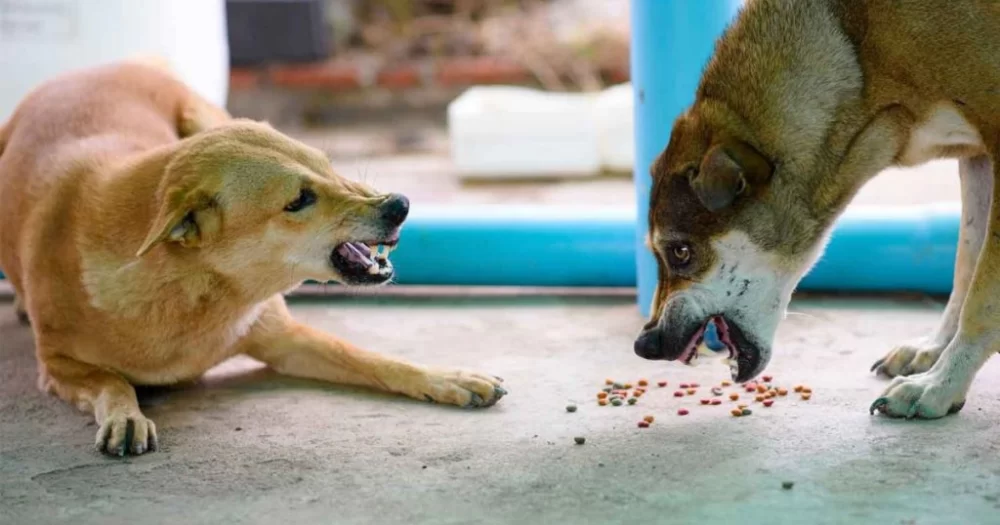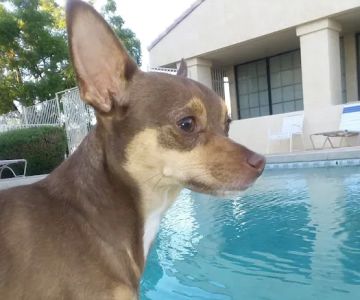Understanding Dog Aggression Towards Other Dogs
If you’re a dog owner, you know how much joy and love a dog can bring into your life. However, when your dog starts showing aggressive behavior towards other dogs, it can be both confusing and frustrating. I’ve had my own challenges with this issue and understand the difficulties it can create. In this article, I’ll take you through my personal journey of dealing with a dog that became aggressive towards other dogs and offer practical, expert-backed advice on how to stop this behavior.
What Causes Aggression in Dogs?
Understanding why your dog is being aggressive towards other dogs is the first step in solving the problem. There are many reasons a dog may act aggressively, and it's crucial to address the root cause. Here are some common reasons:
1. Fear and Anxiety
Many dogs become aggressive because they are scared or anxious. When I adopted my dog Max, I noticed that he would become aggressive whenever he encountered unfamiliar dogs. After consulting with a trainer, I learned that Max was fearful of other dogs and used aggression as a defense mechanism. Fear-based aggression often occurs when a dog feels cornered or unable to escape from a perceived threat.
2. Lack of Socialization
Another common cause of aggression is a lack of proper socialization during a dog’s early development. Dogs that are not exposed to other dogs and various environments may become fearful or territorial when they do encounter other dogs. This was the case with my dog Luna, who had limited exposure to other dogs as a puppy. She would react aggressively to other dogs because she wasn’t used to their presence.
3. Territorial Aggression
Dogs are naturally territorial animals, and they can become aggressive if they feel their space is being invaded. Whether it’s their home, yard, or even a favorite spot on a walk, a dog may feel the need to defend their territory from other dogs. I noticed this with my dog Daisy when she began acting aggressively towards other dogs during walks, especially when she was close to our home. It became clear that she was defending her perceived territory.
4. Pain or Illness
Sometimes, aggression towards other dogs is a symptom of underlying pain or illness. Dogs in pain, whether from an injury or an ongoing medical issue, may act out in frustration or discomfort. I once observed my dog Rocky becoming more aggressive when his arthritis flared up, especially when other dogs tried to approach him. A vet visit helped us identify the issue and take the necessary steps to reduce his discomfort and calm his behavior.
5. Resource Guarding
Dogs can also become aggressive when they feel they need to guard resources like food, toys, or even their owner’s attention. I experienced this firsthand with my dog Jake, who would become aggressive when another dog approached his food bowl. Resource guarding is a behavior that needs to be addressed through training to prevent further aggression.
Effective Strategies to Stop Aggression Towards Other Dogs
Now that we understand the causes of aggression in dogs, let’s dive into some effective methods I’ve used, along with expert strategies, to help stop my dog’s aggression towards other dogs.
1. Proper Socialization
One of the best ways to prevent dog aggression is to ensure your dog is properly socialized. Socializing a dog involves exposing them to different environments, people, and, importantly, other dogs. When I first worked on socializing Max, I took him to a local dog park, where he could interact with other dogs in a controlled and positive manner. Gradually, Max became more comfortable around other dogs, and his aggressive behavior significantly decreased. If you have a puppy, starting socialization early is key, but it’s never too late to help an adult dog learn to socialize more effectively.
2. Training and Positive Reinforcement
Training is essential for managing aggression. I worked with a professional trainer who used positive reinforcement techniques to teach Max and Luna that good behavior around other dogs was rewarded. Instead of punishing aggression, the trainer encouraged calm behavior through treats, praise, and playtime. I found that rewarding my dogs for calm and non-aggressive behavior around other dogs helped reinforce the behavior I wanted to see. Over time, this approach reduced their aggressive tendencies.
3. Desensitization and Counter-Conditioning
Desensitization and counter-conditioning are powerful tools for reducing aggression. This technique involves gradually exposing your dog to the trigger (in this case, other dogs) at a distance where they feel comfortable and rewarding calm behavior. Over time, you gradually reduce the distance and increase the intensity of the exposure. For instance, when Jake showed aggression during walks, I would keep him at a safe distance from other dogs and reward him for remaining calm. Slowly, he learned to associate the presence of other dogs with positive experiences instead of a threat.
4. Proper Leash Handling
Sometimes, the way we handle our dogs on a leash can contribute to their aggression. I noticed that when I was tense on the leash or held it too tightly, my dog would sense my anxiety and become more reactive. A relaxed leash and confident body language can help your dog feel more secure and less likely to react aggressively. If you’re walking your dog in an area with other dogs, maintaining a calm and confident posture can help prevent tension and aggression.
5. Consult a Veterinarian or Behaviorist
If your dog’s aggression is severe or persistent, it’s essential to consult a veterinarian or a canine behaviorist. They can help identify any underlying health issues or behavioral disorders contributing to the aggression. When Daisy’s territorial aggression became unmanageable, I sought help from a behaviorist who worked with me to develop a tailored training plan. In some cases, medication prescribed by a vet may also be recommended to manage anxiety or aggression.
My Personal Experience with Aggression Issues
Every dog is unique, and I’ve had my share of challenges with aggressive behavior. One memorable experience was when Luna, a rescue dog I adopted, started showing aggression during her first encounter with other dogs. Her body language was tense, and she would bark and lunge aggressively whenever another dog approached. I was worried that her behavior would prevent her from having any dog friends.
With the help of a professional trainer, we took things step by step. First, we worked on desensitizing her to other dogs from a distance, rewarding calm behavior. Slowly, we reduced the distance between her and other dogs, and over time, Luna learned that interacting peacefully with other dogs led to positive rewards. Today, she’s much calmer around other dogs and enjoys playdates with her dog friends.
Dealing with a dog that is aggressive towards other dogs can be a long and challenging process, but it is possible to see improvement with patience, consistency, and the right techniques. By using the methods I’ve outlined, I’ve been able to help my dogs become more sociable and less aggressive. If you’re facing similar issues, I highly recommend working with a trainer or behaviorist to tailor a plan for your dog.












